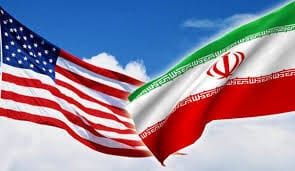Diplomatic-Strategic Report
Iran–United States Nuclear Negotiations: A Pathway to Sustainable Peace and Global Security
Prepared for: International Diplomatic Community & Key Stakeholders
Date: April 28, 2025

Rasheed Ahmad CHUGHTAI
Executive Summary
The resumption of nuclear negotiations between the Islamic Republic of Iran and the United States marks a pivotal moment in international diplomacy, offering a transformative opportunity to reinforce global non-proliferation norms and regional stability. Despite decades of mutual distrust and geopolitical complexities, both nations have exhibited commendable statesmanship by prioritizing dialogue over confrontation—a testament to the enduring power of diplomacy in resolving even the most entrenched disputes.
This report provides a comprehensive analysis of the evolving diplomatic landscape, intelligence assessments, and strategic implications of the Iran–U.S. negotiations. It underscores the growing regional consensus in favor of de-escalation, highlights the constructive roles of key intermediaries, and presents three plausible scenarios with actionable recommendations to sustain this critical diplomatic process.
The international community must recognize the historic significance of these efforts, which hold the potential to reshape the security architecture of the Middle East and reinforce the foundations of multilateral cooperation.
Current Diplomatic Landscape
1. The PGCC’s Strategic Shift: From Rivalry to Reconciliation
The Persian Gulf Cooperation Council (PGCC) states—Saudi Arabia, the UAE, Qatar, Bahrain, Kuwait, and Oman—have adopted a unified and pragmatic stance in support of the Iran–U.S. dialogue. This alignment reflects a strategic recalibration toward long-term stability and economic interdependence.
Key Drivers:
Economic Pragmatism: Gulf economies, particularly those undergoing ambitious diversification initiatives (e.g., Saudi Vision 2030), recognize that regional conflict would disrupt energy markets, deter foreign investment, and jeopardize transformative economic agendas.
Security Rationale: Intelligence reports (The New York Times, April 2025) indicate that PGCC members have tacitly discouraged military escalation by denying overflight permissions for potential strikes on Iran, signaling a preference for diplomatic solutions.
2. Saudi Arabia’s Diplomatic Breakthrough: A New Era of Engagement
Saudi Arabia’s proactive diplomacy has emerged as a cornerstone of regional de-escalation. Prince Khalid bin Salman’s landmark visit to Tehran (April 17, 2025) included:
A personal letter from King Salman to Supreme Leader Ayatollah Khamenei, affirming Riyadh’s commitment to peaceful coexistence.
High-level discussions with Iranian security officials on counterterrorism cooperation and confidence-building measures.
This overture, synchronized with the Rome nuclear talks, underscores Saudi Arabia’s evolving role as a stabilizing force in the region.
3. Iraq’s Resurgent Mediation: Bridging Divides**
Prime Minister Mohammed Shia al-Sudani has skillfully leveraged Iraq’s neutrality to facilitate backchannel negotiations, positioning Baghdad as a credible mediator. The upcoming Arab League summit in Iraq further amplifies its diplomatic resurgence.
Strategic Benefits for Iraq:
Economic Revival: Sanctions relief for Iran could rejuvenate cross-border trade, particularly in energy and agriculture.
Security Stabilization: Reduced proxy tensions would mitigate internal threats to Iraq’s sovereignty and U.S. military presence.
Intelligence Insights: Opportunities and Risks
1. U.S. Domestic Dynamics: Balancing Pragmatism and Pressure
Diplomatic Camp: Advocates for phased sanctions relief in exchange for verifiable nuclear concessions.
Hardline Faction: Pushes for maximalist demands, risking negotiation collapse if inflexibility prevails (Axios, April 2025).
2. Israel’s Strategic Dilemma: Security Concerns vs. Diplomatic Realities
Leaked Israeli contingency plans (October 2024) reveal preparedness for unilateral strikes on Iranian nuclear facilities. While Israel’s security imperatives are acknowledged, such actions could irreparably destabilize the region and derail diplomatic progress.
3. Iran’s Negotiating Posture: Sovereignty and Flexibility
Tehran maintains its right to peaceful nuclear energy under the NPT but has demonstrated openness to compromise, including third-party uranium management (e.g., Russian supervision).
Prospective Scenarios
Prospective Scenarios
| Scenario | Probability | Key Terms | Implications |
| Comprehensive Agreement | 40% | Strict enrichment caps, enhanced IAEA oversight, phased sanctions relief. | Restores JCPOA framework; bolsters global non-proliferation. |
| Negotiation Breakdown | 30% | Unrealistic demands or external military action. | Escalated nuclear activities; heightened risk of regional conflict. |
| Interim Agreement | 30% | Freeze enrichment at 60%, reduce stockpiles, defer contentious issues. | Buys time for diplomacy; prevents immediate escalation. |
Recommendations for the International Community
1. Strengthen Regional Dialogue Forums: Institutionalize PGCC–Iran engagement to foster mutual security guarantees.
2. Empower Neutral Mediators: Support Iraq’s diplomatic platforms to sustain backchannel communications.
3. Deter Unilateral Escalation: Publicly discourage actions that could undermine negotiations.
4. Promote Confidence-Building Measures: Facilitate joint humanitarian projects, cultural exchanges, and energy partnerships.
Conclusion
The Iran–U.S. negotiations represent more than a bilateral dialogue; they are a litmus test for the international community’s ability to resolve conflicts through diplomacy. The courage and foresight demonstrated by both nations deserve robust global support, as their success would herald a new chapter of stability, cooperation, and shared prosperity in the Middle East and beyond.
In an era of geopolitical turbulence, this process reaffirms a fundamental truth: diplomacy, when pursued with patience and perseverance, remains the most powerful instrument for securing peace. The world must stand united in ensuring that this opportunity is not squandered.
“Diplomacy is the art of turning the impossible into the inevitable. Diplomacy is not merely an alternative to conflict; it is the bridge to a better, safer world ”
Structural Clarity: Improved flow with subheadings, bullet points, and a scenario table.
Strategic Depth: Added nuance to regional dynamics and intelligence insights.
Call to Action: Stronger emphasis on international responsibility.




